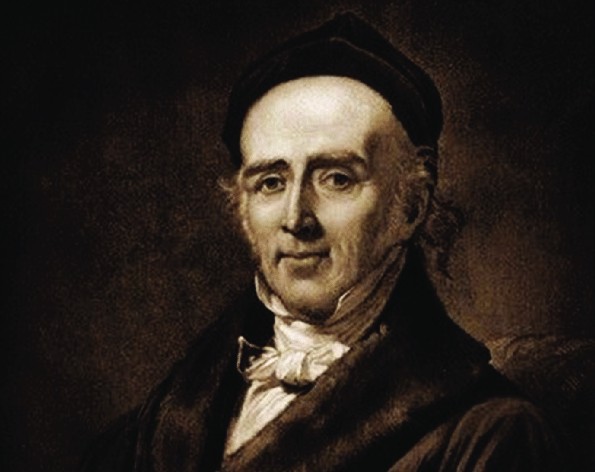The Organon – Aphorism 41-50

§ 41 Fifth Edition
Much more frequent than the natural diseases associating with and complicating one another in the same body are the morbid complication resulting from the art of the ordinary practitioner, which the inappropriate medical treatment (the allopathic method) is apt to produce by the long-continued employment of unsuitable drugs. To the natural disease, which it is proposed to cure, there are then added, by the constant repetition of the unsuitable medical agent, the new, often very tedious, morbid conditions which might be anticipated from the peculiar powers of the drug; these gradually coalesce with and complicate the chronic malady which is dissimilar to them (which they were unable to cure by similarity of action, that is, homoeopathically), adding to the old disease a new, dissimilar, artificial malady of a chronic nature, and thus give the patient a double in place of a single disease, that is to say, render him much worse and more difficult to cure, often quite incurable. Many of the cases for which advice is asked in medical journals, as also the records of other cases in medical writings, attest the truth of this. Of a similar character are the frequent cases in which the venereal chancrous disease, complicated especially with psora or with the venereal chancrous disease, complicated especially with psora or with dyscrasia of condylomatous gonorrhoea, is not cured by long-continued or frequently repeated treatment with large doses of unsuitable mercurial preparations, but assumes its place in the organism beside the chronic mercurial affection1 that has been in the meantime gradually developed, and thus along with it often forms a hideous monster of complicated disease (under the general name of masked venereal disease), which then, when not quite incurable, can only be transformed into health with the greatest difficulty.
1 For mercury, besides the morbid symptoms which by virtue of similarity can cure the venereal disease homoeopathically, has among its effects many others unlike those of syphilis, for instance, swelling and ulceration of bones, which, if it be employed in large doses, causes new maladies and commit great ravages in the body, especially when complicated with psora, as is so frequently the case.
§ 41 Sixth Edition
Much more frequent than the natural diseases associating with and complicating one another in the same body are the morbid complication resulting from the art of the ordinary practitioner, which the inappropriate medical treatment (the allopathic method) is apt to produce by the long-continued employment of unsuitable drugs. To the natural disease, which it is proposed to cure, there are then added, by the constant repetition of the unsuitable medical agent, the new, often very tedious, morbid conditions corresponding to the nature of this agent; these gradually coalesce with and complicate the chronic malady which is dissimilar to them (which they were unable to cure by similarity of action, that is, homoeopathically), adding to the old disease a new, dissimilar, artificial malady of a chronic nature, and thus give the patient a double in place of a single disease, that is to say, render him much worse and more difficult to cure, often quite incurable. Many of the cases for which advice is asked in medical journals, as also the records of other cases in medical writings, attest the truth of this. Of a similar character are the frequent cases in which the venereal chancrous disease, complicated especially with psora or with the venereal chancrous disease, complicated especially with psora or with dyscrasia of condylomatous gonorrhoea, is not cured by long-continued or frequently repeated treatment with large doses of unsuitable mercurial preparations, but assumes its place in the organism beside the chronic mercurial affection1 that has been in the meantime gradually developed, and thus along with it often forms a hideous monster of complicated disease (under the general name of masked venereal disease), which then, when not quite incurable, can only be transformed into health with the greatest difficulty.
1 For mercury, besides the morbid symptoms which by virtue of similarity can cure the venereal disease homoeopathically, has among its effects many others unlike those of syphilis, for instance, swelling and ulceration of bones, which, if it be employed in large doses, causes new maladies and commit great ravages in the body, especially when complicated with psora, as is so frequently the case.
§ 42
Nature herself permits, as has been stated, in some cases, the simultaneous occurrence of two (indeed, of three) natural disease in one and the same body. This complication, however, it must be remarked, happens only in the case of two dissimilar disease, which according to the eternal laws of nature do not remove, do not annihilate and cannot cure one another, but, as it seems, both (or all three) remain, as it were, separate in the organism, and each takes possession of the parts and systems peculiarly appropriate to it, which, on account of the want of resemblance of these maladies to each other, can very well happen without disparagement to the unity of life.
§ 43
Totally different, however, is the result when two similar disease meet together in the organism, that is to say, when to the disease already present a stronger similar one is added. In such cases we see how a cure can be effected by the operations of nature, and we get a lesson as to how man ought to cure.
§ 44 Fifth Edition
Two diseases similar to each other can neither (as is asserted of dissimilar disease in I) repel one another, nor (as has been shown of dissimilar disease in II) suspend on another, so that the old one shall return after the new one has run its course; and just as little can two similar disease (as has been demonstrated in III respecting dissimilar affections) exist beside each other in the same organism, or together form a double complex disease.
§ 44 Sixth Edition
Similar diseases can neither (as is asserted of dissimilar disease in I) repel one another, nor (as has been shown of dissimilar disease in II) suspend on another, so that the old one shall return after the new one has run its course; and just as little can two similar disease (as has been demonstrated in III respecting dissimilar affections) exist beside each other in the same organism, or together form a double complex disease.
§ 45 Fifth Edition
No! Two diseases, differing, it is true, in kind1 but very similar in their phenomena and effects and in the sufferings and symptoms they severally produce, invariably annihilate one another whenever they meet together in the organism; the stronger disease namely, annihilates the weaker, and that for this simple reason, because the stronger morbific power when it invades the system, by reason of its similarity of action involves precisely the same part of the organism that were previously affected by the weaker morbid irritation, which, consequently, can no longer act on these parts, but is extinguished2, or (in other words) because, whenever the vital force, deranged by the primary disease, is more strongly attacked by the new, very similar, but stronger dynamic morbific power, it therefore now remains affected by the latter alone, whereby the original, similar but weaker disease must, as a mere dynamic power without material substratum, cease to exercise any further morbid influence on the vital force, consequently it must cease to exist.
1 Vide, supra, § 26, note.
2 Just as the image of a lamp’s flame is rapidly overpowered and effaced from our retina by the stronger sunbeam impinging on the eye.
§ 45 Sixth Edition
No! Two diseases, differing, it is true, in kind1 but very similar in their phenomena and effects and in the sufferings and symptoms they severally produce, invariably annihilate one another whenever they meet together in the organism; the stronger disease namely, annihilates the weaker, and that for this simple reason, because the stronger morbific power when it invades the system, by reason of its similarity of action involves precisely the same part of the organism that were previously affected by the weaker morbid irritation, which, consequently, can no longer act on these parts, but is extinguished2, or (in other words), the new similar but stronger morbific potency controls the feelings of the patient and hence the life principle on account of its peculiarity, can no longer feel the weaker similar which becomes extinguished – exists no longer – for it was never anything material, but a dynamic – spirit-like – (conceptual) affection. The life principle henceforth is affected only and this but temporarily by the new, similar but stronger morbific potency.
1 Vide, supra, § 26, note.
2 Just as the image of a lamp’s flame is rapidly overpowered and effaced from our retina by the stronger sunbeam impinging on the eye.
§ 46
Many examples might be adduced of disease which, in the course of nature, have been homoeopathically cured by other diseases presenting similar symptoms, were it not necessary, as our object is to speak about something determinate and indubitable, to confine our attention solely to those (few) disease which are invariably the same, arise from a fixed miasm, and hence merit a distinct name.
Among these the smallpox, so dreaded on account of the great number of its serious symptoms, occupies a prominent position, and it has removed and cured a number of maladies with similar symptoms.
How frequently does smallpox produce violent ophthalmia, sometimes even causing blindness! And see! By its inoculation Dezoteux1 cured a chronic ophthalmia permanently, and Leroy2 another.
An amaurosis of two years’ duration, consequent on suppressed scald head, was perfectly cured by it, according to Klein.3
How often does smallpox cause deafness and dyspnoea! And both these chronic diseases it removed on reaching its acme, as J. Fr. Closs4 observed.
Swelling of the testicle, even of a very severe character, is a frequent symptom of small-pox, and on this account it was enabled, as Klein5 observed, to cure, by virtue of similarity, a large hard swelling of the left testicle, consequently on a bruise. And another observer6 saw a similar swelling of the testicle cured by it.
Among the troublesome symptoms of small-pox is a dysenteric state of the bowels; and it subdued, as Fr. Wendt7 observed, a case of dysentery, as a similar morbific agent.
Smallpox coming on after vaccination, as well on account of its greater strength as its great similarity, at once removes entirely the cow-pox homoeopathically, and does not permit it to come to maturity; but, on the other hand, the cow-pox when near maturity does, on account of its great similarity, homoeopathically diminish very much the supervening smallpox and make it much milder8, as Muhry9 and many others testify.
The inoculated cow-pox, whose lymph, besides the protective matter, contains the contagion of a general cutaneous eruption of another nature, consisting of usually small, dry (rarely large, pustular) pimples, resting on a small red areola, frequently conjoined with round red cutaneous spots and often accompanied by the most violent itching, which rash appears in not a few children several days before, more frequently, however, after the red areola of the cow-pock, and goes off in a few days, leaving behind small, red, hard spots on the skin; – the inoculated cow-pox, I say, after it has taken, cures perfectly and permanently, in a homoeopathic manner, by the similarity of this accessory miasm, analogous cutaneous eruptions of children, often of very long standing and of a very troublesome character, as a number of observers assert.10
The cow-pox, a peculiar symptom of which is to cause tumefaction of the arm11, cured, after it broke out, a swollen half-paralyzed arm.12
The fever accompanying cow-pox, which occurs at the time of the production of the red areola, cured homoeopathically intermittent fever in two individuals, as the younger Hardege13 reports, confirming what J. Hunter14 had already observed, that two fevers (similar diseases) cannot co-exist in the same body.
The measles bear a strong resemblance in the character of its fever and cough to the whooping-cough, and hence it was that Bosquillon15 noticed, in an epidemic where both these affections prevailed, that many children who then took measles remained free from whooping-cough during that epidemic. They would all have been protected from, and rendered incapable of being infected by, the whooping-cough in that and all subsequent epidemics, by the measles, if the whooping-cough were not a disease that has only a partial similarity to the measles, that is to say, if it had also a cutaneous eruption similar to what the latter possesses. As it is, however, the measles can but preserve a large number from whooping-cough homoeopathically, and that only in the epidemic prevailing at the time.
If, however, the measles come in contact with a disease resembling it in its chief symptom, the eruption, it can indisputably remove, and effect a homoeopathic cure of the latter. Thus a chronic herpetic eruption was entirely and permanently (homoeopathically) cured16 by the breaking out of the measles, as Kortum17 observed. An excessively burning miliary rash on the face, neck, and arms, that had lasted six years, and was aggravated by every change of weather, on the invasion of measles assumed the form of a swelling of the surface of the skin; after the measles had run its course the exanthema was cured, and returned no more.18
1 Traite de l’inoculation, p.189.
2 Heilkunde fur Mutter, p.384.
3 Interpres clinicus, p.293.
4 Neue Heilart der Kinderpocken. Ulm, 1769, p.68; and Specim., obs. No. 18.
5 Op. cit.
6 Nov. Act. Nat. cur., vol, I, obs. 22.
7 Nachricht Von dem Krankeninstitut zu Erlangen, 1783.
8 A new footnote is added here in the Sixth Edition, as follows:
This seems to be the reason for this beneficial remarkable fact namely that since the general distribution of Janner’s Cow-pox vaccination, human small-pox never again appeared as epidemically or virulently as 40-45 years before when one city visited lost at least one-half and often three-quarters of its children by death of this miserable pestilence.
9 Willian, Ueber die Kuhpockenimpfung, aus dem Engl., mit Zusatzen G.P. Muhry, Gottingen, 1808.
10 Especially Clavier, Hurel and Desmormeaux, in the Bulletin des sciencs medicales, publie par les membres de l’ Eure, 1808, also in the Journal de medicine continue, vol. xv, p.206.
11 Balhorn, in Hufeland’s Journal, 10, ii.
12 Stevenson, in Duncan’s Annals of Medicine, lustr. 2, vol. I, pt. 2, No. 9.
13 In Hufeland’s Journal, xxiii.
14 On the Veneral Disease, p.4.
15 Cullen’s Elements of Practical Medicine, pt. 2, I, 3, ch. vii.
16 Or at least that symptom was removed.
17 In Hufeland’s Journal, xx, 3, p.50.
18 Rau, Ueber d. Werth des hom. Heidelb., 1824, p.85.
§ 47
Nothing could teach the physician in a plainer and more convincing manner than the above what kind of artificial morbific agent (medicine) he ought to choose in order to cure in a sure, rapid and permanent manner, conformably with the process that takes place in nature.
§ 48
Neither in the course of nature, as we see from all the above examples, nor by the physician’s art, can an existing affection or malady in any one instance be removed by a dissimilar morbific agent, be it ever so strong, but solely by one that is similar in symptoms and is somewhat stronger, according to eternal, irrevocable laws of nature, which have not hitherto been recognized.
§ 49
We should have been able to meet with many more real, natural homoeopathic cures of this kind if, on the one hand, the attention of observers had been more directed to them, and, on the other hand, if nature had not been so deficient in helpful homoeopathic diseases.
§ 50
Mighty Nature herself has, as we see, at her command, as instruments for effecting homoeopathic cures, little besides the miasmatic diseases of constant character, (the itch) measles and smallpox1, morbific agents which2, as remedies, are either more dangerous to life and more to be dreaded than the disease they are to cure, they themselves require curing, in order to be eradicated in their turn – both circumstances that make their employment, as homoeopathic remedies, difficult, uncertain and dangerous. And how few diseases are there to which man is subject that find their similar remedy in smallpox, measles or itch! Hence, in the course of nature, very few maladies can be cured by these uncertain and hazardous homoeopathic remedies, and the cure by their instrumentality is also attended with danger and much difficulty, for this reason that the doses of these morbific powers cannot be diminished according to circumstances, as doses of medicine can; but the patient afflicted with an analogous malady of long standing must be subjected to the entire dangerous and tedious disease, to the entire disease of smallpox, measles (or itch), which in its turn has to be cured. And yet, as is seen, we can point to some striking homoeopathic cures effected by this lucky concurrence, all so many incontrovertible proofs of the great, the sole therapeutic law of nature that obtains in them: Cure by symptoms similarity!
1 And the exanthematous contagious principle present in the cow-pox lymph.
2 Namely, small-pox and measles.







